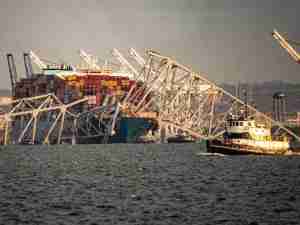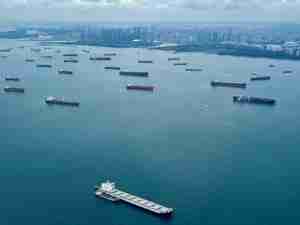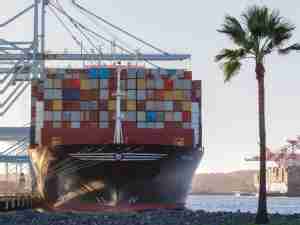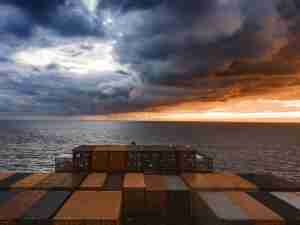In line with offering a predictable Great-Lakes St. Lawrence Seaway trade corridor, the following targeted dates for the closing of the navigation season for the respective sections are being communicated in a timely manner. While preserving the sustainability of the navigation season is very important, we are also mindful that unanticipated environmental conditions may occur during the closing period. Should this happen, the dates outlined below for the Montreal-Lake Ontario Section or the Welland Canal may change.
Closing Dates
Montreal-Lake Ontario Section
- The Corporations have decided to waive the operational surcharges on December 21, 22, 23, and 24.
- Any transit of the Montreal-Lake Ontario Section of the Seaway after 23:59 hours, December 24, if permitted, will be subject to a prior written agreement. Arrangements are to be made at the St. Lambert office.
- Irrespective of operating conditions, all vessels must be clear of the Montreal-Lake Ontario Section at 12:00 hours (noon) on December 31, 2022.
Welland Canal
- Any transits of the Welland Canal after 23:59 hours, December 26, if permitted, will be subject to a prior written agreement. Arrangements are to be made at the St. Catharines office.
- As part of a season pilot program this navigation season, all vessels must be clear of the Welland Canal at 12:00 hours (noon), January 7, 2023, operating conditions permitting.
Sault Ste. Marie Locks and Canal (United States)
Closing of the Sault Ste. Marie Locks (U.S.A.) is currently scheduled for January 15, 2023. Please note the Notice to Navigation Interests released by the US Army Corps of Engineers for further information.
Ports East of Montreal
Ship owners and operators are advised that there are a number of ports east of the Seaway (St. Lambert Lock) on the St. Lawrence River that remain open to navigation during the winter months.
Detailed Closing Procedures
Note that the Seaway Practices and Procedure (Seaway Handbook), Part X, Sections 96 and 97 outline the Navigation Closing Procedures.
For the 2022 navigation season, the Seaway entities have agreed to apply the closing procedures outlined below. In these procedures, the following terms are used:
- The clearance date, as defined in Seaway Practices and Procedures, will be December 20, 2022, at 23:59 hours;
- The closing period: the period beginning December 1 and continuing until the last ship has completed its transit.
During the closing period, the following procedures will be in effect:
Reporting
- Commencing at 0001 hours, December 1 and for the duration of the closing period, each upbound ship entering the Seaway at CIP 2 or departing upbound from a port, dock, wharf or anchorage in the Montreal-Lake Ontario Section must declare the furthermost destination of its voyage.
- Commencing at 0001 hours, December 17 and for the duration of the closing period, each downbound ship entering Traffic Control Sector 4 at mid-Lake Ontario must declare the furthermost St. Lawrence River destination of its voyage, along with all intermediate destinations
Upbound ships with destinations above Iroquois Lock
- A ship that enters the Seaway System upbound at CIP 2 after 23:59 hours on December 9 and transits above Iroquois Lock shall be designated a ‘wintering ship’.
- A ‘wintering ship’ wishing to return downbound through the MontrealLake Ontario Section will be granted downbound transit privileges only if, in the opinion of the Manager and the Corporation, such transit can be accomplished safely and without interfering with the orderly and timely transit of any ship not designated as a ‘wintering ship’ or without otherwise disrupting the system.
- A ‘wintering ship’ wishing to return downbound through the MontrealLake Ontario Section must give notification of such intent to the Manager or Corporation at least 72 hours prior to arriving at Cape Vincent.
- If a ‘wintering ship’ is granted downbound transit privileges through the Montreal-Lake Ontario Section, it will be subject to the following:
- A ‘wintering ship’ will yield, whenever required to do so by the Manager or the Corporation, its downbound order of turn for the Montreal-Lake Ontario Section in favor of ships that are not designated as ‘wintering ship’.
- The application of subparagraph (i) above shall not excuse a ‘wintering ship’ from liability for the post-clearance-date operational surcharges as specified in the St. Lawrence Seaway Tariff of Tolls.
- A ‘wintering ship’ will be required to accept and acknowledge that a downbound transit is not assured and that the Manager and the Corporation make no representation whatsoever as to their ability to successfully transit the ship downbound through the Montreal-Lake Ontario Section.
Acceptance For Transit Through The Montreal/Lake Ontario Section Without Special Agreements
- Upbound ships not otherwise restricted will be accepted for transit through the Montreal-Lake Ontario Section at Cap St. Michel up to 23:59 hours, December 24.
- Downbound ships not otherwise restricted will be accepted for transit through the Montreal-Lake Ontario Section at calling-in point Cape Vincent up to 23:59 hours, December 24.
- Ships, which have complied with these clearance dates' call-in procedures, will be cleared through the Montreal-Lake Ontario Section of the Seaway, operating conditions permitting. ‘Operating conditions’ means all conditions that affect or may affect the operation and maintenance of the Montreal/Lake Ontario Section of the Seaway as determined by the Seaway entities.
Acceptance For Transit Through The Montreal-Lake Ontario Section Under Special Agreements
Transits under the special agreement will be allowed only if, in the judgment of both Seaway entities, operating conditions permit. This applies to:
- Any and all ships which report at the designated call-in points at Cap St. Michel and Cape Vincent after 23:59 hours, December 24, and,
- Any and all ships that are at a port, dock or wharf in the Cap St. Michel to Cape Vincent section of the Seaway reporting for transit after 23:59 hours, December 24
Acceptance For Transit Through The Welland Canal Under Special Agreements
Transits under the special agreement will be allowed only if, in the judgment of St. Lawrence Seaway Management Corporation, operating conditions permit. This applies to:
- Any and all ships which report at the designated call-in points at CIP 15 and CIP 16 after 23:59 hours, December 26.
- Any and all ships that are at a port, dock or wharf in the Port Colborne to Port Weller section of the Seaway reporting for transit after 23:59 hours, December 26.
Transit Restrictions (Draft and Power to Length Ratio)
Unique ice conditions can be encountered in the St. Lambert–Iroquois segment. To reduce the problem of lengthy delays caused by ships operating on ice, the following restrictions may apply during the closing period.
Mariners will be advised via radio message should the transit restriction be in effect.
- After 0001 hours on December 7, ships in the following categories may not be accepted for transit between St. Lambert and Iroquois Locks:
Upbound
i. Ships with a power-to-length ratio of less than 20:1 (kW/meter);
ii. Ships with a forward draft of less than 40 dm.
Downbound
i. Ships with a power-to-length ratio of less than 15:1 (kW/meter);
ii. Ships with a forward draft of less than 20 dm.
- After 0001 hours on December 12, ships in the following categories may not be accepted for transit between St. Lambert and Iroquois Locks:
Upbound
i. Ships with a power-to-length ratio of less than 24:1 (kW/meter);
ii. Ships with a forward draft of less than 50 dm.
Downbound
i. Ships with a power-to-length ratio of less than 15:1 (kW/meter);
ii. Ships with a forward draft of less than 25 dm.
- In all cases, the draft is to be sufficient to have the propeller fully submerged.
- The draft limitations referred to in a) and b) do not apply to tugs. e.
- Subject to approval, ship operators may utilize a tug of a minimum of 3000 HP to augment the power of a ship not meeting the requirements specified above. In calculating the ship’s power-to-length ratio, 50% of the tug’s horsepower can be added to the ship’s power.
- For determining the power-to-length ratio, the information contained in the Lloyd’s Register will be used.
- Ship operators should note that compliance with the above restrictions does not assure transit and that the Seaway entities may increase or decrease the restrictions as ice or other conditions dictate. These changes will be announced as early as practical, but in no case later than 24 hours before they go into effect.










